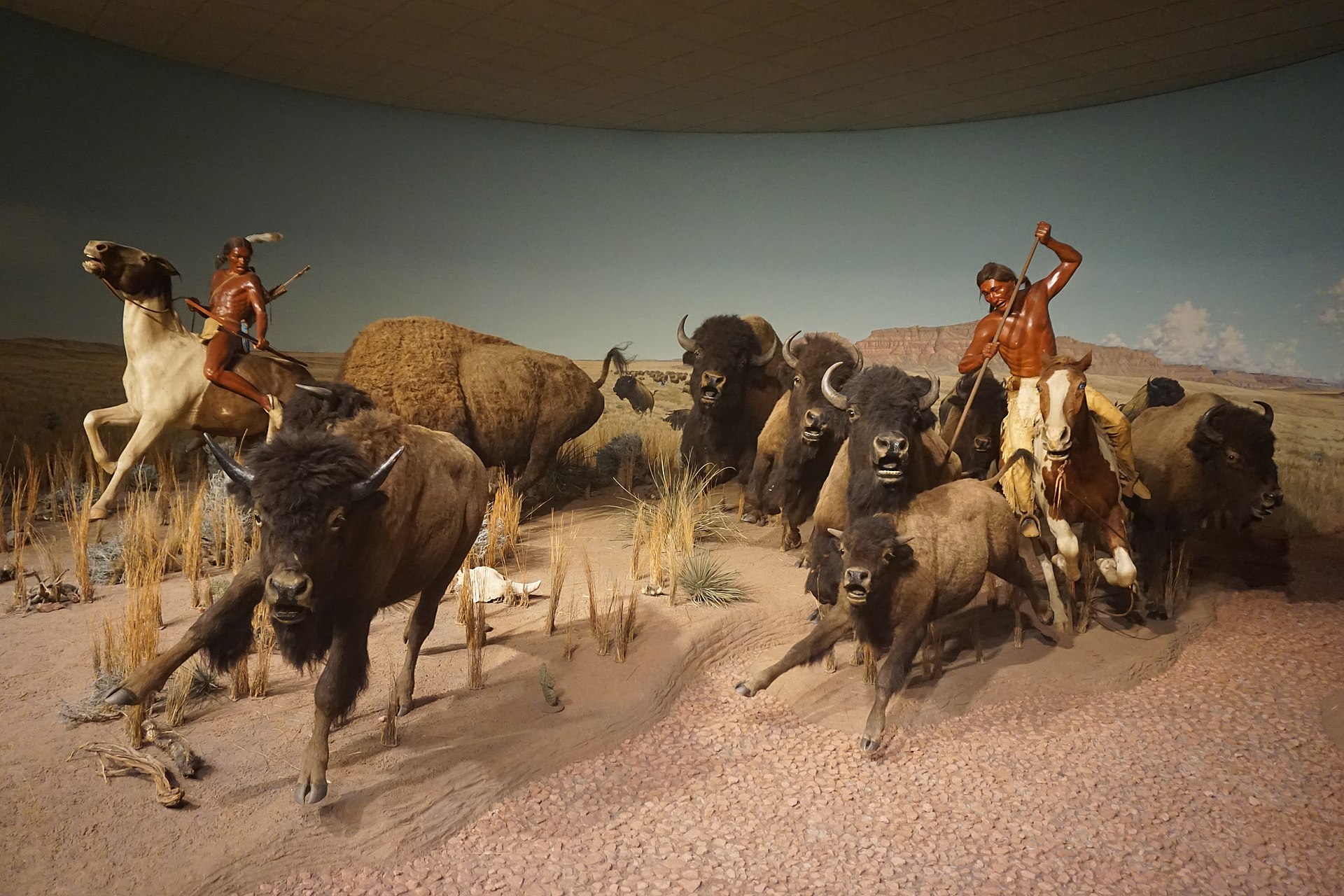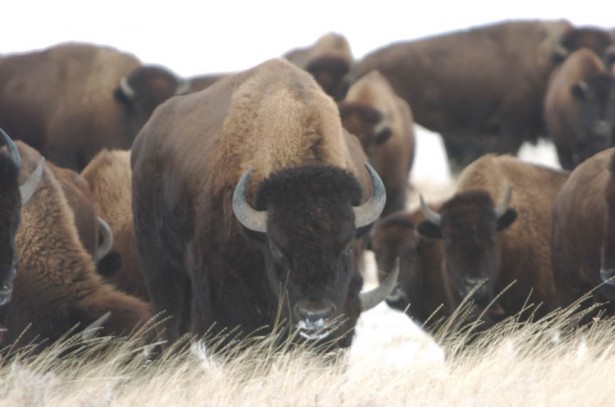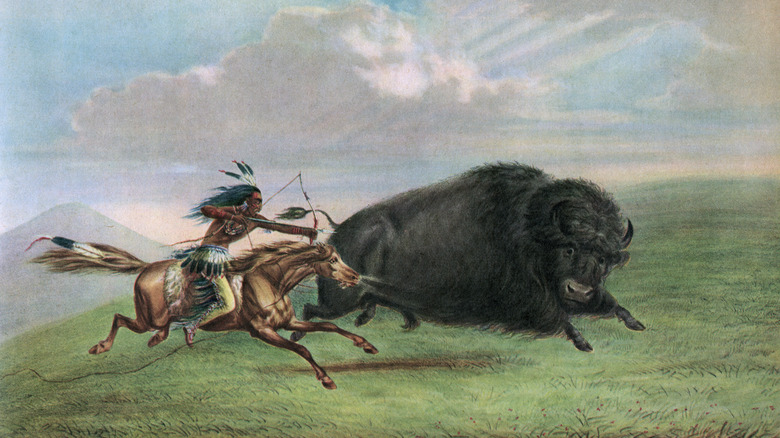
Echoes of Thunder: The Resurgence of Traditional Buffalo Hunting Among the Crow Nation
CROW AGENCY, Montana – The wind whips across the vast plains of southeastern Montana, carrying the scent of sagebrush and damp earth. Here, under the immense sky that seems to stretch to infinity, the land breathes with ancient memories. For the Apsáalooke, or Crow Nation, these memories are inextricably linked to the American bison, or buffalo (Bison bison) – a creature that was once their lifeblood, their supermarket, and their spiritual guide.
For generations, the thunder of buffalo hooves was the heartbeat of the Apsáalooke. Their nomadic lives were dictated by the herds’ movements, every part of the magnificent animal utilized: meat for sustenance, hides for tipis and clothing, bones for tools, sinew for thread, and even dung for fuel. The buffalo was not just food; it was a relative, a sacred being woven into the very fabric of their identity, ceremonies, and cosmology.

"The buffalo gave us everything," says Elsie Half, a Crow elder whose eyes hold the wisdom of generations. "They were our moving grocery store, our hardware store, our home. Without them, we were nothing."
But then came the silence. The deliberate, systematic slaughter of millions of buffalo in the 19th century by non-Native hunters, often encouraged by the U.S. government as a means to subdue Indigenous peoples, nearly wiped out the species. From an estimated 30-60 million roaming the plains in the early 1800s, their numbers plummeted to a mere few hundred by 1889. For the Crow and other Plains tribes, this decimation was not just an ecological disaster; it was a cultural genocide, ripping away their primary resource and a profound connection to their way of life.
The Crow, like many tribes, were forced onto reservations, their traditional hunting practices curtailed, their spiritual connection to the buffalo severed. The echoes of thunder faded, replaced by the quiet despair of a people dispossessed and disoriented.
A Return to the Source
Today, however, the plains are once again stirring with a different kind of thunder – a thunder of resurgence, of cultural reclamation. Across the Crow Indian Reservation, a vast 2.3-million-acre expanse, efforts are underway to revive the traditional buffalo hunt, not merely as a sport, but as a deeply spiritual, educational, and community-building endeavor.
This modern revival is a testament to the resilience of the Apsáalooke people. It’s a complex undertaking, balancing tradition with modern realities, respecting conservation efforts, and navigating the intricate web of tribal and federal regulations. Unlike the pre-reservation days when vast herds roamed free, today’s hunts often involve managed herds on tribal lands, or participation in limited-permit hunts on public lands where buffalo populations have been re-established.
"It’s not exactly like the old days," explains Robert Yellowtail, a younger Crow hunter and cultural preservationist, his voice resonating with quiet passion. "We don’t chase thousands of animals across open plains for days. But the spirit of the hunt, the teachings, the respect – that remains the same. That’s what we’re bringing back."
The process begins long before the actual hunt. It involves meticulous planning, spiritual preparation, and the transfer of knowledge from elders to the younger generation. Youth participate in workshops on buffalo anatomy, tracking, traditional ethics, and the spiritual significance of the hunt. They learn about the prayers offered before and after a kill, the proper way to approach the animal, and the sacred responsibility of utilizing every part of the buffalo.

"The most important part is the reverence," says Elsie Half. "You honor that animal for giving its life for you. You never waste. You thank the Creator."
The Hunt: More Than Just a Kill
When the day of the hunt arrives, it’s a solemn occasion. Often, a small group of hunters, accompanied by elders and spiritual leaders, will set out. The modern hunt may utilize vehicles to locate a specific animal, but the final approach is often on foot, requiring patience, stealth, and an intimate knowledge of the land.
Once a buffalo is taken, the work truly begins. This is where the intergenerational knowledge transfer shines brightest. Elders guide the younger hunters through the intricate process of field dressing, skinning, and butchering. They demonstrate how to carefully remove the hide, how to separate the muscle groups, how to extract the organs for various uses. This is a hands-on classroom where traditional skills, once on the verge of being lost, are meticulously passed down.
"Every cut, every action, has a purpose and a teaching behind it," Yellowtail explains, gesturing with his hands as if demonstrating. "We teach them how to make jerky, how to process the hide for rawhide or robes, how to use the bones for tools or ceremonial items. It’s about remembering who we are."
The meat, rich in nutrients and flavor, is then distributed throughout the community, particularly to elders and families in need. This act of sharing reinforces the communal bonds that are so central to Crow culture, echoing the days when successful hunts meant survival for the entire band.
Beyond the meat, the hides are meticulously cleaned, stretched, and tanned – a labor-intensive process that can take weeks or months. These hides are then transformed into traditional clothing, drums, ceremonial regalia, or sold as artisan goods, providing a modest economic benefit while preserving ancient crafts. Bones are used for tools or crafts, and even the hair can be used in traditional weaving.
Challenges and Triumphs
Despite the passion and dedication, the path to buffalo hunting revival is not without its challenges. Access to land and buffalo herds remains a significant hurdle. While some tribes own and manage their own herds, others must rely on partnerships with government agencies or private landowners. Regulatory frameworks, often designed for modern livestock, can sometimes clash with traditional practices. Funding for equipment, training, and processing facilities is also a constant need.
Perhaps the biggest challenge, however, is rekindling the deep-seated knowledge and spiritual connection in a world dominated by fast food and digital screens. Many young people grew up disconnected from these traditions.
"We’re competing with a lot," admits a Crow school teacher involved in cultural programs. "But when they get out there, when they put their hands on that animal, when they see how much it gives, something awakens in them. It’s powerful."
The triumphs, however, far outweigh the difficulties. The revival of buffalo hunting is fostering a renewed sense of cultural pride and identity among the Crow Nation. It’s improving community health by providing access to lean, nutritious traditional foods. It’s strengthening family ties as generations work together. And crucially, it’s empowering the youth by connecting them to their heritage and instilling a sense of responsibility for their culture and the land.
The buffalo, once a symbol of decimation, has become a potent symbol of resilience and rebirth for the Crow people. Its return to their lands and their lives represents more than just a successful conservation effort; it signifies the healing of historical trauma, the reawakening of ancient spirits, and the powerful assertion of their enduring identity.
As the sun dips below the horizon, painting the vast Montana sky in hues of orange and purple, the wind still whispers across the plains. But now, if you listen closely, you might just hear it – a faint, persistent rumble, an echo of thunder, carried on the breath of the buffalo, resounding through the heart of the Crow Nation. It is the sound of a people remembering, reclaiming, and thriving.


